Large Course Assignment and Assessment Ideas
Overview
Large courses are those with a high student enrollment; these courses can present some unique challenges, particularly when it comes to grading student assignments and assessments.
How to Get Started
Step 1: Grading large assignments or exams takes a lot of time in large courses. Consider the ideas below to reduce this burden:
- Could you break some large exams into more frequent, smaller assessments? Perhaps they could be designed as automatically-graded assessments, or if they require your input you’d have fewer questions to grade at once. In addition to reducing your grading load, this approach can also reduce student stress, which decreases the likelihood of academic dishonesty. For more, see Types of Assessment.
- Could group work and/or peer assessment be a good fit for your learning outcomes? Perhaps students could use Google Docs to review one another’s writing, or they could work together in Google Slides to produce a presentation. For more, see Best Practices for Group Work Evaluation.
Step 2: Evaluate areas of difficulty for students.
- What concepts in your course are typically more difficult for students to grasp? This is a ripe area for including formative assessments. A simple and engaging way to do this is through interactive video quizzing with tools like PlayPosit or Panopto. For more, see Panopto or PlayPosit? Deciding Which is Best for Interactive Video Quizzes.
- Review the time students spend in your course actively participating versus passively listening to you speak. This is a measure of active learning, and can reveal room for improvement in assignments and assessments. For more, see Active Learning.
Step 3: Consider alternative assignments and assessments. During the COVID pandemic, many instructors opted for alternative assessments rather than traditional exams.
- Simplify grading metrics (Wilsman, 2013):
- Use detailed rubrics to reduce the need for extensive written comments. This can speed up grading as you check rubric boxes instead of providing extensive written feedback, and also helps all TAs grade consistently. Be sure to share the rubric with your students ahead of time so they understand your expectations.
- Consider grading papers on a three-to-five point scale, with specific pieces of information required for each point. You could also use a check/check-minus/check-plus system.
- Utilize Gradescope, a tool that increases efficiency and consistency in grading, and is especially useful in large classes.
- Experiment with various assignment types (Temple, 2020):
- Unless your course specifically requires papers and essays as an objective, try to convert some writing assignments to worksheets or templates. A worksheet or template “essentially asks students directly about the required elements with a space to write the answer (which can be a brief statement or a paragraph), which is typically much quicker to grade and evaluate student efforts, and is often more straightforward for students as well” (Brown University, 2021).
- In addition to removing larger papers as much as possible, consider assigning several short writings with the goal of writing to learn.
- Have students create quizzes for the rest of the class. This is a great way to not only see what they think is important, but may also be used as a study guide.
Step 4: Implement new assessments into your course design and see how it goes.
Best Practices
- For all courses, and especially large ones, be sure to format Moodle (or another LMS) using a clear, effective structure. See Tips for Organizing Your Moodle Course. In the examples below, Moodle Labels are used as headings to group similar types of content together. The naming style, structure and order of components is similar in each module:
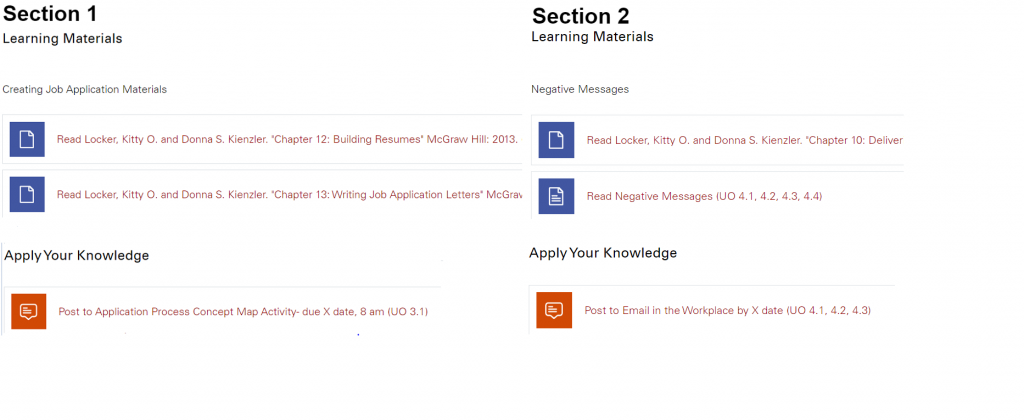
- Set clear expectations from the beginning. A course map can assist with this, as well as helping you ensure that objectives, assignments, and assessments align. You can get started by using a Course Map Template. The diagram below provides a visual of how the map is designed:
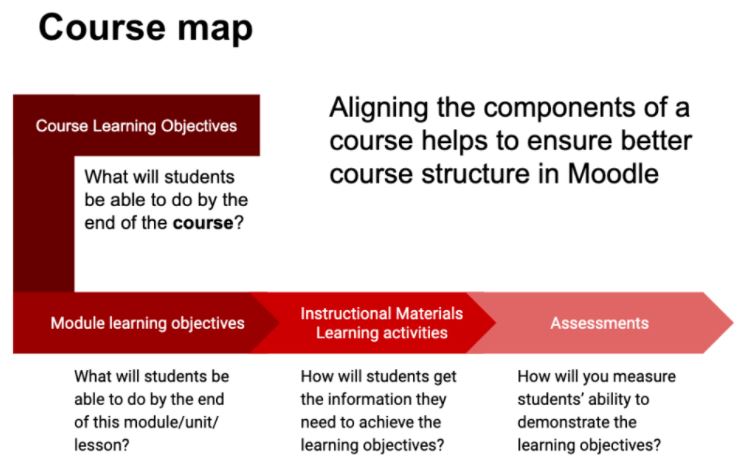
- Include an “Ask the Class” forum in Moodle so students can get help from each other rather than emailing you every question. Further, consider including a list of Frequently Asked Questions (FAQs) from previous semesters, along with your responses to them.
- Spread low-stakes learning opportunities throughout the course to help students track their learning and progress.
- Let students know how to get started in the course by including a “Getting Started” NC State Book. You could think of this as a “how to succeed” section, which is especially helpful for large courses (Brown University, 2021).
- Include a self-introduction, preferably through video, and ask students to introduce themselves to the class. This is usually done through a forum post (or video) activity to help establish a sense of community. For large courses, group students so they only respond to 4-5 peer introductions.
- DELTA workshop recordings are available to help with various online teaching concepts and applications.
Examples
- For courses of any size, strategic course design plays a key role in reducing student confusion and instructor stress. Numerous NC State courses have received Quality Matters Certification for high-quality course design.
- This student evaluation form can ensure that each person pulls their weight during group work (Carnegie, 2015):
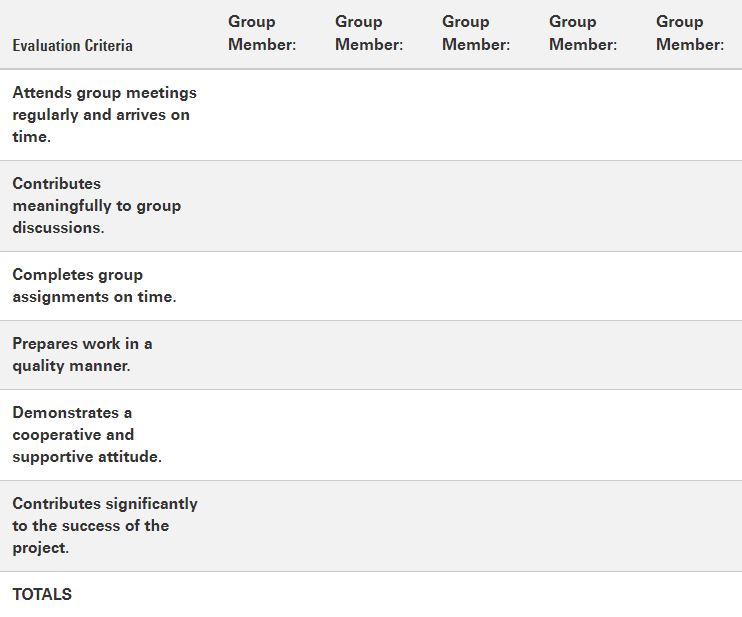
- Example of a holistic rubric for a final paper:
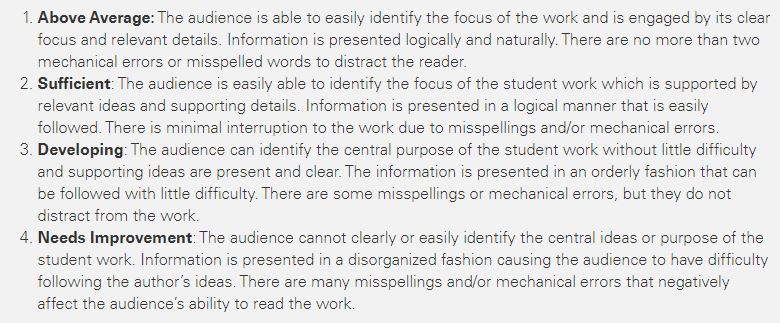
- Example of a (partial) presentation rubric (see full rubric):

- Example of a PlayPosit question:
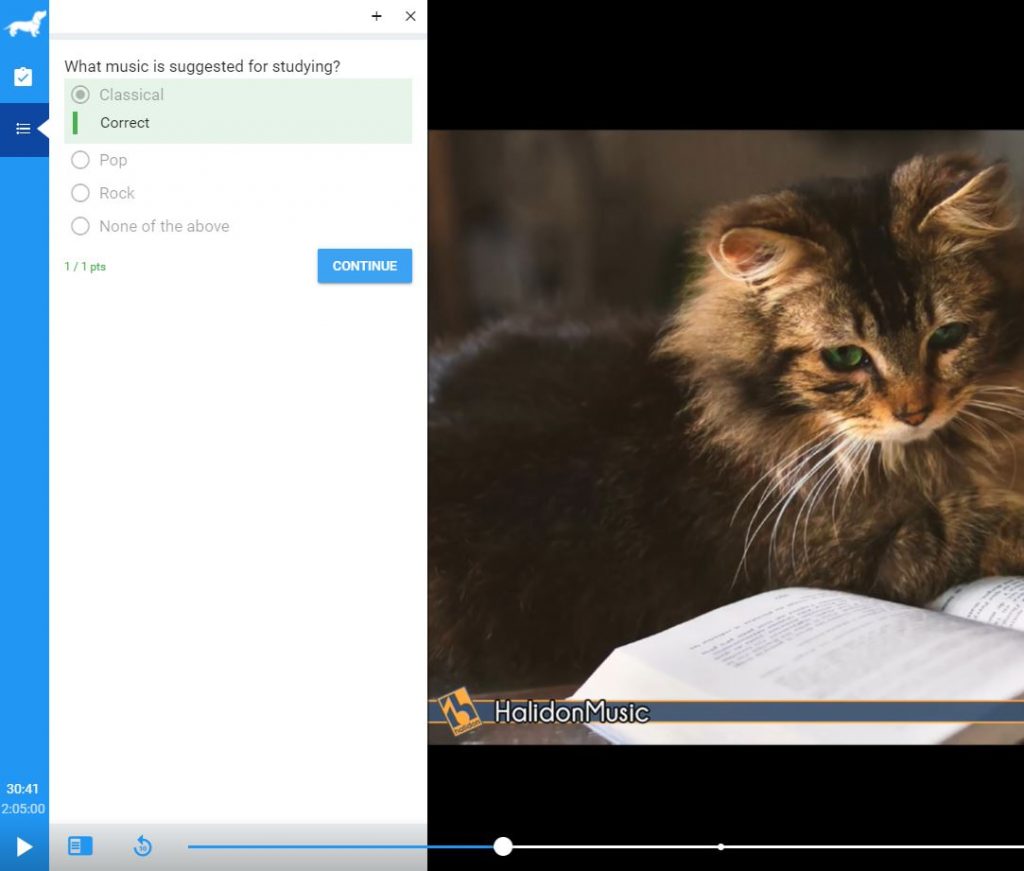
- Example of a Panopto question:
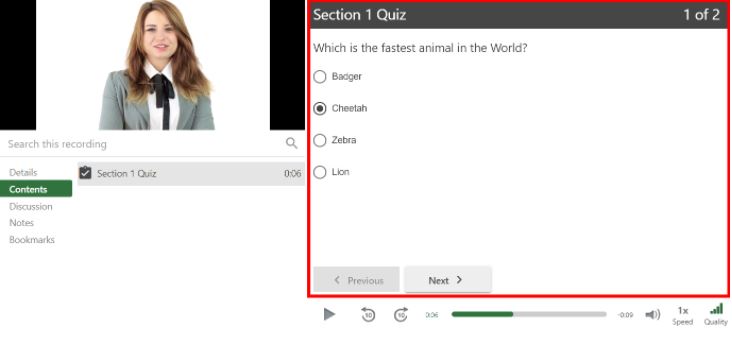
- One instructor says, “The opportunity to ask a free response type of question allowed me to poll the class to see if there were any questions about material and actually get questions back. Students are reluctant to raise their hands, but are very willing to post their questions electronically.” Below is an image of students utilizing Top Hat in class:

Resources
Brown University. (2021). Large course assignments guide. Digital Learning and Design. https://dld.brown.edu/resources/guides/moving-large-courses-online/large-course-assignments-guide
Carnegie Mellon University. (2015). Sample group project tools. Eberly Center. https://www.cmu.edu/teaching/designteach/design/instructionalstrategies/groupprojects/tools/index.html
Dyer, K. (2013). Large class sizes? Formative assessment for learning fits just fine. Northwest Evaluation Association. https://www.nwea.org/blog/2013/large-class-sizes-formative-assessment-for-learning-fits-just-fine/
Temple, T. (2020). Alternative assessment resources for teaching and learning online. DELTA News. https://delta.ncsu.edu/news/2020/05/01/alternative-assessment-resources-for-teaching-and-learning-online/
Wilsman, A. (2013). Ask Professor Pedagogy: Assessment suggestions for large lecture classes. Vanderbilt University Center for Teaching. https://cft.vanderbilt.edu/2013/02/ask-professor-pedagogy-assessment-suggestions-for-large-lecture-classes/